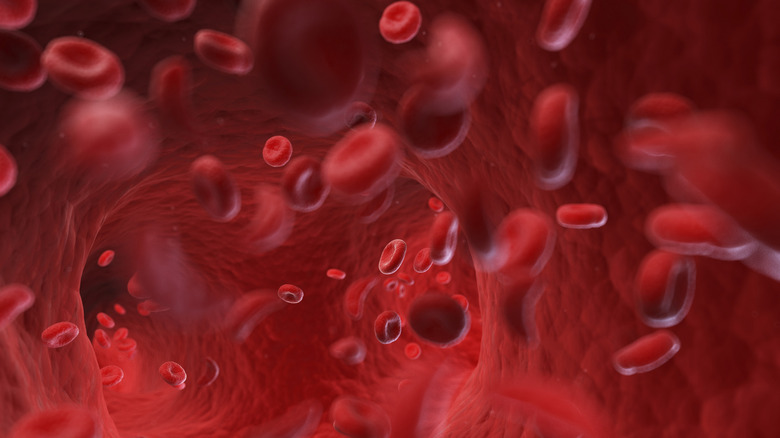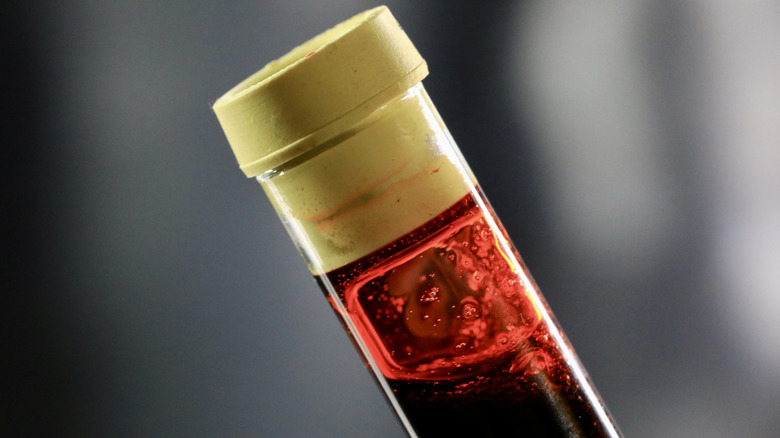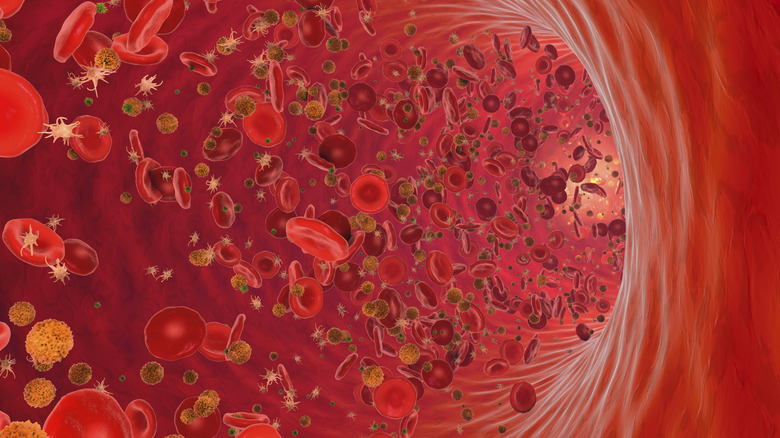If You Have This Blood Type, You Could Be At Greater Risk For A Painful Death
Today, we all understand the importance of blood type, but that's actually a relatively recent discovery. Before the 1900s, doctors believed all blood was the same, which unsurprisingly led to a lot of tragic medical outcomes, including fatal transfusions. Thankfully, we now know that blood type is one of the most important genetic characteristics, and have identified blood groups to ensure transfusions don't result in tragedy.
In total, there are eight blood types: O positive, O negative, A positive, A negative, B positive, B negative, AB positive, and AB negative. Some of these are rarer than others. AB negative is the rarest, with just 0.6% of the U.S. population possessing this blood type. 1.5% have B negative, 3.4% have AB positive, 6.3% have A negative, 6.6% have O negative, 8.5% have B positive, 35.7% have A positive, and 37.4% have O positive.
While our blood type determines who we may be able to donate blood to and from whom we can receive blood, it also reveals quite a lot about our immune systems. The blood types are defined by which antigens are present or absent on the surface of our red blood cells. All cells in our body have surface markers or antigens, the latter of which refers to any substance to which the immune system can respond. When our immune system identifies an antigen that already exists on our body's own cells, typically, nothing happens. But when it encounters an unfamiliar antigen, it attacks. As such, if we receive a transfusion of blood that contains red blood cells covered in antigens that differ from those already found in our bodies, our immune systems will attack the new blood, making it crucial to identify the correct blood type.
But the antigens on our red blood cells tell us more than which blood type to use for transfusions. They reveal much about our immune systems, and it seems one blood type could mean you're more likely to endure a painful and potentially deadly experience in emergency situations.
The major risk facing those with type O blood
Since different blood types contain red blood cells with different antigens, that essentially means we all have immune systems that will respond differently to certain situations. Infectious diseases, for example, can have different effects depending on a person's blood type. But it's not just infectious diseases that can differ depending on blood type.
A 2018 study in Critical Care looked at participants' risk of surviving a traumatic injury. The study included 901 trauma patients from two emergency rooms, who were divided by their blood type. 284 type O, 285 type A, 209 type B, and 123 type AB patients provided the data for the study, and the researchers determined that those with type O blood were associated with high mortality (28% in patients with blood type O versus 11% in patients with other blood types). After age and the injury severity were taken into account, type O patients were found to have a three times higher risk of death when compared to the other participants.
One of the major factors contributing to this disparity was found to be severe bleeding. Those with type O blood were shown to be more disposed to bleeding, which is one of the most common causes of death among trauma patients. These findings are supported by an earlier meta-analysis from 2013 and published in Seminars in Thrombosis and Hemostasis. The analysis looked at the results of 22 studies comprising 9,468 bleeding patients and more than 450,000 controls and determined that the prevalence of type O blood was significantly higher in bleeding patients than in control patients. These studies suggest that those with type O blood are significantly more likely to experience severe bleeding in trauma situations.
It's not all bad news for those with type O
The good news is that if you have type O blood, you're at a lower risk for developing blood clots than those with types A and B. A 2017 study published in the journal Circulation looked at the ABO gene, which is present in people with A, B, or AB blood types, and found that those with this gene were at higher risk of heart attack during periods of heavy air pollution. Then, in 2020, another study published in the journal Arteriosclerosis, Thrombosis, and Vascular Biology involved 400,000 people and found those with type A or B blood had a combined 8% higher risk of heart attack and 10% higher risk of heart failure than those with type O blood.
The same study found that those with type A and B blood were more disposed to blood clotting, and were 51% more likely to develop deep vein thrombosis, a condition whereby blood clots form in deep veins, usually in the legs, and prevent our peripheral blood from flowing. They were also found to be 47% more likely to develop a pulmonary embolism, which refers to when a blood clot that prevents blood flow travels to an artery in the lung. It should be borne in mind that the research excluded those with type AB blood and was somewhat held back by a lack of cause-and-effect explanations. Regardless, having type O blood isn't all doom and gloom.
Put simply then, the research appears to suggest that those with blood types A, B, and AB are at a higher risk of blood clots and related conditions, while those with type O blood are more likely to have issues with excessive bleeding, which can prove fatal in terms of severe trauma injuries and brain injuries.


